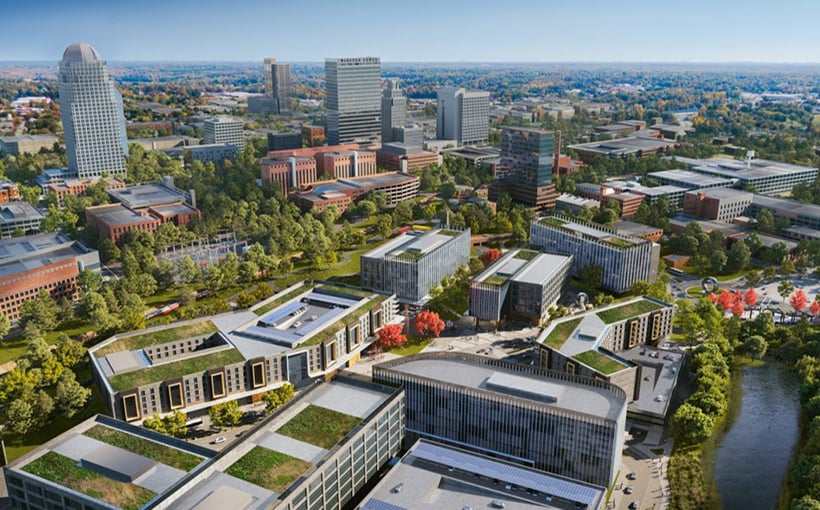Image: Innovation Quarter in Winston-Salem, NC is featured in a recent survey by the Association of University Research Parks (AURP) and Stiletto Consulting Inc., which found that over two-thirds of university-based research parks and innovation districts in North America are currently working on major building projects.
According to an article published by Urban Land Magazine, some of these development projects may face challenges without proper funding, programming, and governance. However, experts from organizations such as ULI, The Brookings Institution, and the Global Institute on Innovation Districts have provided recommendations for achieving success.
The Struggle:
One factor contributing to the struggles faced by R&D parks is the current hybrid work structure. With remote work becoming more prevalent due to the pandemic, traditional isolated research parks are no longer effective. Instead, vibrant live-learn-work innovation districts are emerging as a new trend.
Another issue is that traditional siloed approaches between universities,government agencies,and industry partners are no longer effective or desirable.
Tips for Success:
To create a thriving innovation district,the following four tips were suggested:
1) Establish an authentic identity with clear goals instead of simply constructing buildings together.
For example,North Carolina’s Innovation Quarter focuses on regenerative medicine while The Pearl,in North Carolina,is dedicated to promoting equitable health outcomes.
2) Balance planning,funding,and governance with strong private-sector leadership being crucial for success even when public capital from universities or government agencies is involved.The right funding model should also consider long-term maintenance through PPPs,governance structures,and overall operating models.
3) Carefully select occupiers who contribute positively towards creating an intentional mix within the district.Also,pay attention to physical design utilizing urban spaces effectively along with attractive amenities,cutting-edge infrastructure,services like professional assistance,vendor capital access etc.to attract growing businesses into this location.
4) Consider social,economic,and environmental impacts.For instance,the Brooklyn Navy Yard has established an equity incubator to support businesses owned by people of color,while the New York Climate Exchange focuses on green economy development and climate crisis solutions.Leading districts prioritize creating a positive impact through job and venture creation,workforce development,and opportunities for experiential learning and applied research.
In conclusion,innovation districts have the potential to thrive with proper planning,funding,governance,and focus on social,economic,and environmental impacts. By following these recommendations from experts,the success of innovation districts can be ensured in the future.




